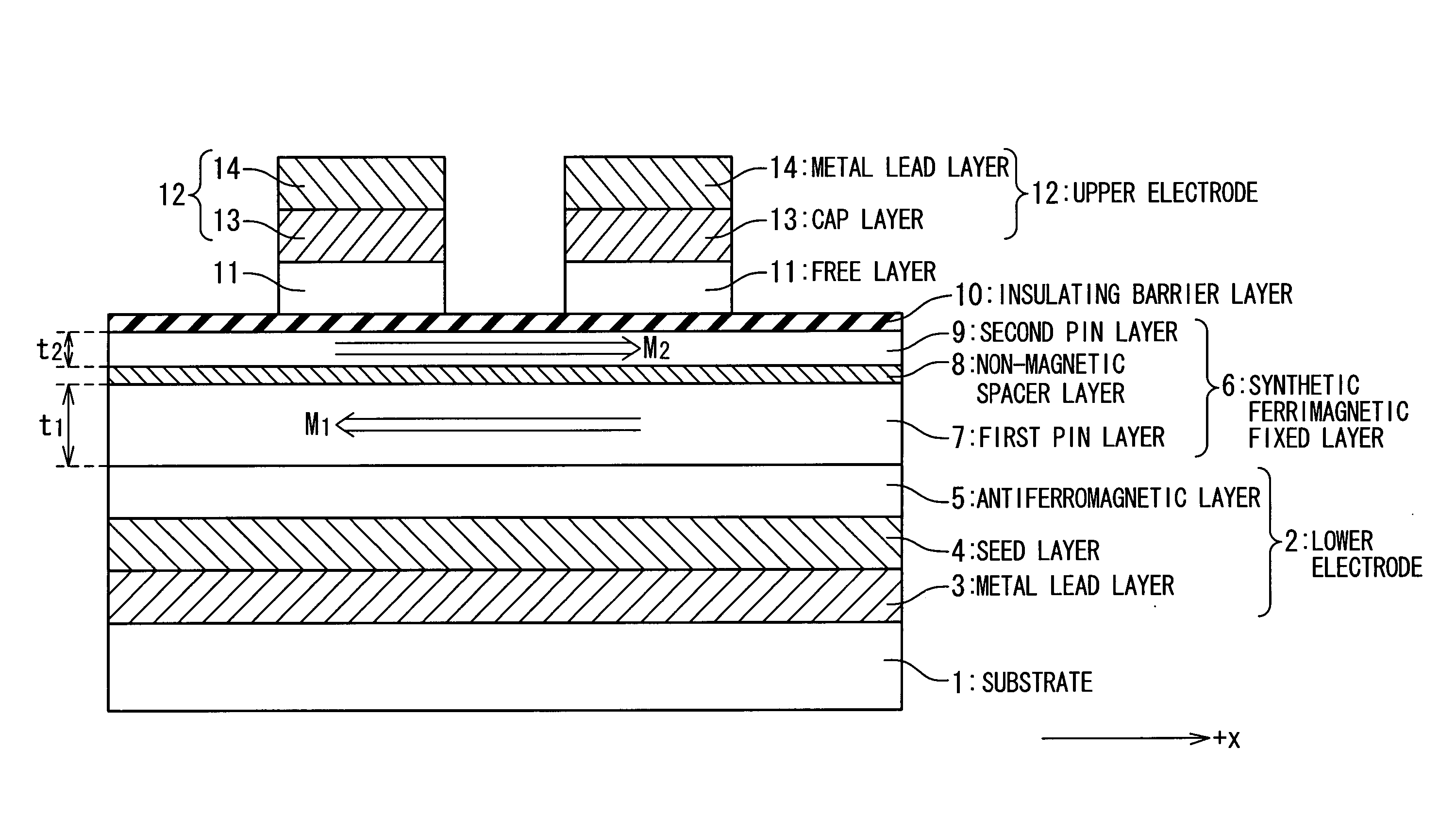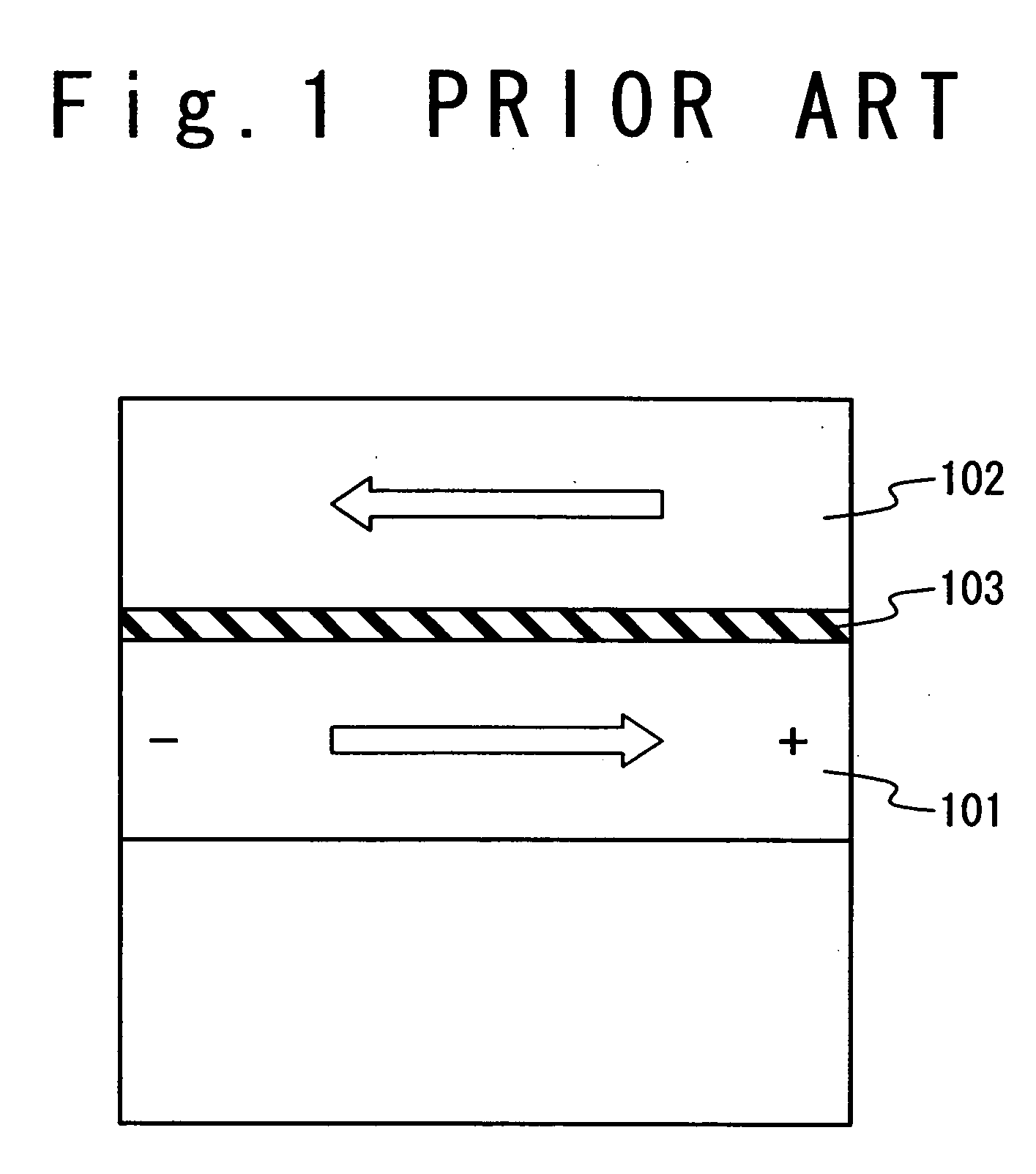Magnetic random access memory
a random access and memory technology, applied in the field of magnetic random access memory, can solve the problems of difficult to cancel the orange peel coupling effect by the magneto-static coupling effect in each of large number of memory cells, the uniform magnetic field received by the free layer 102, and the cancellation of the orange peel coupling effect, etc., to achieve uniform reduction of offset magnetic fields, suppress offset magnetic fields, and reduce the offset magnetic field of memory cells
- Summary
- Abstract
- Description
- Claims
- Application Information
AI Technical Summary
Benefits of technology
Problems solved by technology
Method used
Image
Examples
first embodiment
[0055]FIG. 7 indicates a structure of the MRAM according to a first embodiment of the present invention. It should be noted that for a better understanding of this structure, a ratio of the vertical length to the horizontal length in the structure of the MRAM shown in FIG. 7 is different from in a ratio in the structure of the actual MRAM.
[0056] The MRAM in the first embodiment is composed of a substrate 1 and a lower electrode 2. The substrate 1 has been formed on the substrate 1. Th lower electrode 2 contains a metal lead layer 3, a seed layer 4, and an anti-ferromagnetic layer 5. The metal lead layer 3 is typically formed of Al or Cu. The seed layer 4 is typically formed from a Ta film or a synthetic film of a Ta film and a Ru film. The anti-ferromagnetic layer 5 is formed of anti-ferromagnetic material, and is typically formed of FeMn, IrMn, or PtMn.
[0057] A synthetic ferrimagnetic fixed layer 6 is formed on the lower electrode 2. The synthetic ferrimagnetic fixed layer 6 cont...
second embodiment
[0087]FIG. 11 shows the structure of an MRAM according to the second embodiment of the present invention. It should be noted that a ratio of the horizontal length and the vertical length in the structure of the MRAM shown in FIG. 11 is different from a ratio of them in the structure of the actual MRAM, for a better understanding of this structure.
[0088] In the MRAM of the second embodiment, both the orange peel coupling effect and the magneto-static coupling effect are suppressed by a synthetic ferrimagnetic fixed layer 6′ having a structure which is different from that of the synthetic ferrimagnetic fixed layer 6 in the first embodiment.
[0089] The synthetic ferrimagnetic fixed layer 6′ in the MRAM of the second embodiment contains a first pinned layer 7′, a plurality of non-magnetic spacer layers 8′, and second pinned layers 9′ formed on the non-magnetic spacer layers 8′. Both the first pinned layer 7′ and the second pinned layer 9′ are formed of ferromagnetic material, and there...
PUM
 Login to View More
Login to View More Abstract
Description
Claims
Application Information
 Login to View More
Login to View More - R&D
- Intellectual Property
- Life Sciences
- Materials
- Tech Scout
- Unparalleled Data Quality
- Higher Quality Content
- 60% Fewer Hallucinations
Browse by: Latest US Patents, China's latest patents, Technical Efficacy Thesaurus, Application Domain, Technology Topic, Popular Technical Reports.
© 2025 PatSnap. All rights reserved.Legal|Privacy policy|Modern Slavery Act Transparency Statement|Sitemap|About US| Contact US: help@patsnap.com



